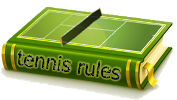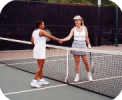
Object of the Game: Two or four players compete to score points by hitting a tennis ball over a net and out of an opponent’s reach, or in such a way that it cannot be returned back across the net inside the court.
Random photos







Object of the Game: Two or four players compete to score points by hitting a tennis ball over a net and out of an opponent’s reach, or in such a way that it cannot be returned back across the net inside the court.





|
Shape and dimensions:
|
Types of court surfaces:
|
 |
|
|
 |
|
 |
|
|
|
|
|
 |
 |
|
 |
|
|
|
|
 |
